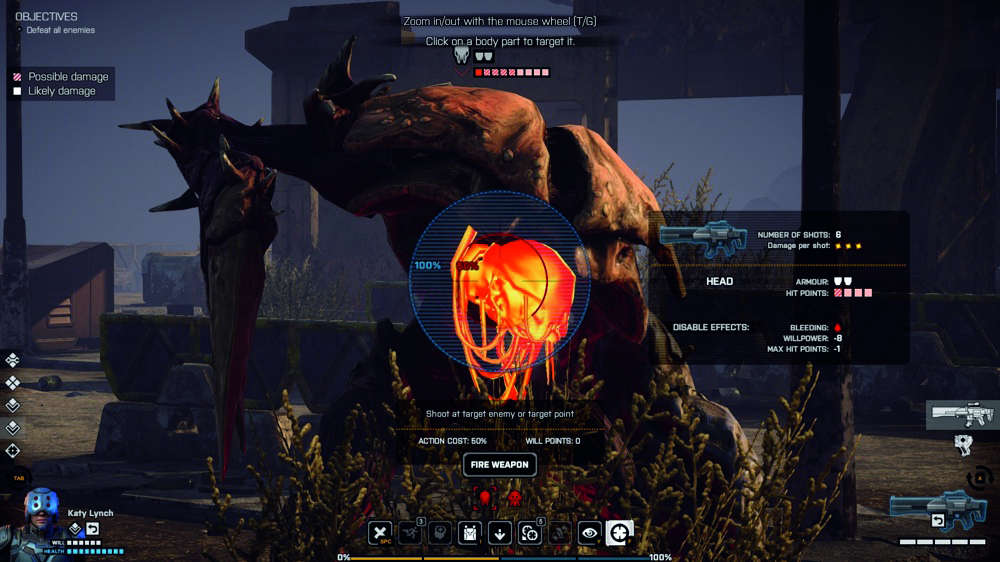Phoenix Point and the 25-year-journey to create a spiritual sequel to legendary strategy game X-COM
Strategy gaming legend Julian Gollop on the difficulties of uniting X-COM (1994) and XCOM (2012) fans who are funding his new turn-based game

Julian Gollop’s latest game is facing a rather unusual challenge: existing within two separate legacies, and needing to satisfy both at once. There’s the one that goes back a quarter of a century, to 1994’s UFO: Enemy Unknown (commonly known as X-COM, its US title), and the much more recent lineage spawned by Firaxis’ 2012 XCOM: Enemy Unknown. The two might share a name, but they have distinct audiences, each with their own demands - as Gollop, whose Snapshot Games has funded Phoenix Point’s production through a mix of crowdfunding and early-access preorders, is all too aware.

This feature is taken from Edge magazine and you can save up to 55% on a print and digital subscription
“There are basically two groups in our backers. There are those who want something more like the original X-COM but spruced up,” he says. “The other camp is people who want [things to work like] the Firaxis XCOM. And then there are a few people in the middle, who want some mixture of both, somehow.” He’s talking specifically about the game’s approach to character classes, which were absent from the original but a major part of the reboot – but it applies to almost every element of Phoenix Point. The tactical battles in particular show the influence of Firaxis and the way it managed to, in Gollop’s words, “make turn-based strategy games sexy again”. There’s more than an echo of XCOM’s slick cinematic presentation in, for example, the smooth pan of the camera as it slides from soldier to soldier, each rattling off overwatch shots.
Simulation, not revolution
At first glance, it might be too close – the visual style, interface and even the majority of keyboard shortcuts will be immediately familiar to anyone who has played the Firaxis games. But prod Phoenix Point’s systems a little more firmly, and the divergence from that formula starts to become apparent. The headline feature is the ability to zoom in with the mouse wheel when firing, targeting individual body parts. Damage a gunner’s arm and it might be unable to fire a weapon or toss a grenade. Blow a leg off that Crabman advancing on your soldiers, pincers snapping, and its charge will be reduced to a hobble.

Platforms: PC, Mac, Xbox One
Release Date: September 2019
Genre: Turn-based strategy
Developer: Snapshot Games
This is the just most prominent example of Phoenix Point’s simulationist approach to gunplay. It’s ditching the abstracted dice rolls to determine whether a shot hits or misses – something that can mean a soldier standing one square away from a target, its shotgun practically tucked under the alien’s chin, still misses the shot. Instead, it calculates a path for each bullet, tracing it through anything that blocks the line of sight – including your own team members.
Gollop talks gleefully about realistic ballistics and bell-curve distributions, and how it recalls the 3D collision simulation of the original X-COM, but all you really need to know is this: in the zoomed-in Free Aimmode, you’re shown two concentric circles. Every shot you fire will land somewhere in the larger circle, roughly half of them inside the central bullseye. This allows you to do things such as sneak a shot through narrow gaps in the scenery or catch the single alien appendage that’s poking out of cover, adding an extra layer of finesse to even the smallest decision. Because the spread of shots widens as you get further from the target, and varies hugely depending on weapon class, there’s a much clearer difference between a sniper rifle and a short-range automatic.
An evolution of X-COM's big idea

Every successful hit is followed by a string of tiny updates that reflects this stats-first approach: not just the amount of damage, but which body parts were disabled or equipment damaged, whether the target is bleeding or took a hit to their willpower. “There are players who like and demand lots of stats – percentages, damage types, all this kind of stuff – and then there are other players who are much more visually inclined. They just want to see some simple information, clearly represented, about the likely outcome,” says Gollop. So how does the team find a balance between old and new, complex and streamlined? “With lots of arguments and testing, I guess.” It’s telling that, on the question of character classes, Snapshot landed on a compromise: each character can dual-class, with an additional personal progression track of randomised abilities – the simplicity of one game’s systems, without giving up the other’s breadth of choices.
"Each character can dual-class, with an additional personal progression track of randomised abilities"
As far as Gollop is concerned, though, neither the first X-COM or any of Firaxis’ reimaginings are the main influence on Phoenix Point. He points instead to The Dreamland Chronicles: Freedom Ridge – a game which was cancelled during development, resulting in the 2001 closure of Gollop’s Mythos Games studio. “Some of the ideas from Dreamland are actually in Phoenix Point,” he says. “You could say that, from about 1999, I’ve been trying to find ways to evolve the big X-COM idea.” That evolution comes in the strategy meta-game that exists outside of the individual battles, and how the two interact. This is the real link between X-COM, XCOM and Phoenix Point: what Gollop calls “the concept that the battle you’re fighting is part of this bigger context, and what feeds into the strategy layer will also feed back into the tactical layer, which is that core addictive game loop.”
Weekly digests, tales from the communities you love, and more

Gollop’s proposed evolution, which he first experimented with in 1997’s X-COM Apocalypse and was advancing in Dreamland Chronicles until its cancellation, is to make pushing against AI opponents as big a part of the strategic game as it is the tactical battles. The main strategic opponents in Phoenix Point aren’t the amphibious alien forces, but your fellow man.
"Gollop talks about economic systems, and taking inspiration from grand strategy games like Civilization and Stellaris"
There are three factions living in the outposts scattered across the game’s ‘geoscape’ map of Earth, all with their own objectives and diplomatic relationships with the player and each other. The difficulty is that, for now, the strategic game is something of an iceberg. In the build we play, only the tip of what Gollop promises is visible. There’s a geoscape you can fly your jet around, uncovering faction-owned or independent havens which might need protecting, abandoned bases from your own Phoenix Project which can be raided for resources and other points which immediately trigger tactical missions. Fuel is a constant concern – run out and your jet won’t be able to make it back to base, requiring resources to fill up or build a refuelling station. Beyond that, as well as the usual base building, Gollop talks about economic systems, and taking inspiration from grand strategy games like Civilization and Stellaris. Call it a 4X-COM game. But most of these big ideas are currently hidden beneath the waters of development.

As these games are rooted in the interplay between their two layers – and because that’s the particular aspect Gollop is trying to advance – this obfuscation makes it harder to gauge the tactical game. It’s a solid foundation, yes, but how satisfying each mission is relies on that broader context, the attachment to individual soldiers or the resources being wagered on the outcome of a battle. If the strategy level can live up to its promise, Phoenix Point could break free of its legacies – both of them – and create something truly new.
Want to upgrade your PC gaming? Don't miss our guide to the best gaming PC
Edge magazine was launched in 1993 with a mission to dig deep into the inner workings of the international videogame industry, quickly building a reputation for next-level analysis, features, interviews and reviews that holds fast nearly 30 years on.



